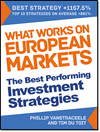This is the editorial of our monthly Quant Value Investment Newsletter published on 4 November 2025. Sign up here to get it in your inbox the first Tuesday of every month.
More information about the newsletter can be found here: This is how we select ideas for the Quant Value investment newsletter
Many investors fear buying at all-time highs, thinking the gains are over. This article challenges that belief. It shows that buying stocks near their highs, especially those with strong momentum, can actually lead to better returns and less risk. Research proves that combining this with a 20% trailing stop-loss creates a system that grows wealth and limits losses.
You will learn why all-time highs are often the start of bigger gains, not the end. And how to follow a simple plan that keeps you confident and protected.
Estimated Reading time: 4 minutes
Why You Should Love All-Time Highs (and How to Invest with Confidence)
Do you feel nervous, or hesitate to buy when the stocks recommended in the newsletter (or the market) are trading at their all-time highs? If so, you are not alone. I also think that I am “too late.” And that buying now means buying the top.
But I have taught myself to ignore this feeling because of a lot of research I did that ALL showed price momentum REALLY works. This was hard for me as a classic value investor.
What I found changed how I invest forever:
Buying at all-time highs is not just okay. It is often the best decision you can make.
And when you combine it with a trailing stop-loss, it becomes a powerful system that can grow your wealth and protect it at the same time.
All-Time Highs Are Not the Enemy
We are not alone; a lot of investors fear all-time highs. It feels like the party is almost over, and you are the last one walking in. But the research says something very different.
This was recently confirmed by a very interesting research study by Meb Faber from Cambria Investment Management.
In the study, two simple strategies were tested.
#1 All Time High
The first was an “all-time high” rule: invest in stocks only when they are within 5% of their highest-ever price; otherwise, switch to 10-year U.S. government bonds.
For U.S. stocks, this rule produced 9.6% annual returns versus 10.1% for buy-and-hold but with half the volatility and a much smaller drawdown (only -29% vs. -84%).
For foreign stocks, the strategy outperformed buy-and-hold, with 9.8% returns vs. 7.9%, while also reducing drawdowns (down to -31% from -70%).
#2 12-Month High
Secondly, they tested using a 12-month high instead of an all-time high. With this change, U.S. stock returns rose to 10.7%, and foreign stocks increased 11.9%.
Both versions had lower volatility and cut maximum losses nearly in half.
The takeaway is clear: investing near highs, especially recent ones, consistently delivers stronger returns with less pain. Buying at new highs means buying strength. You are putting your money where the trend is up.
Just think about it: all great-performing stocks spent a lot of time making new highs on their way up. All-time highs do not mean “the end.” Often, they are just the beginning with a lot more to come.
But What About the Risk? Use a Trailing Stop
Here is where most investors still get stuck:
“What if I buy at the high, and it crashes right after?”
That is a fair question. And we have a great answer:
This is the same rule we use in the Quant Value Newsletter. Once a stock falls 20% from its highest close, we sell it, no questions asked.
Why is this so powerful?
It lets you stay invested; you do not sell early. You know exactly when you will exit. It protects you from deep losses. It removes the emotion from selling.
Instead of guessing, you have a clear plan. You let your winners run, and you cut your losers fast. This gives you the confidence to buy at new highs. Because you are no longer afraid of a sudden drop. You already know what you will do if it happens.
Implementation: How You Can Use This in Your Portfolio
As a subscriber to the Quant Value Newsletter, you are doing this already. All investment ideas may not be at their all-time or 12-month highs, but have good momentum (one of the core investment criteria) and come with a 20% stop-loss.
You do not even need to think twice.
Conclusion: Embrace the Highs, Protect the Downside
So, if you fear highs and hope for dips you now see the market does not work that way. The best stocks keep making new highs. The smartest investors follow strength - not fear. And when you add a trailing stop-loss, you get the best of both worlds: Upside potential with clear downside protection.
So next time you see a new high, do not hesitate to buy. It means something is working. And now, you have the tools to make it work for you.
Stay invested. Stay systematic. And stay confident - especially when your portfolio hits new highs.
Your, helping you get the most from the system analyst.
FREQUENTLY ASKED QUESTIONS
1. Should I avoid buying stocks at all-time highs?
No, all-time highs are not a warning sign; they are often a sign of strength. Research shows that buying near new highs can actually lead to better returns. It means the stock is doing well and could keep rising. Instead of avoiding highs, follow the trend and stay disciplined.
2. How can I protect myself if I buy at a high and the stock drops?
Use a 20% trailing stop-loss. This rule protects your downside. If the stock falls 20% from its highest close, you sell. This keeps your losses small while letting your winners grow. It removes emotion and gives you a clear plan.
3. Is buying at highs riskier than waiting for a dip?
Not always. Waiting for dips sounds safe, but data shows that strong stocks often keep rising. Momentum matters. A good system with risk controls, like stop-losses, can help you buy with confidence - even at highs.
4. Does investing in all-time highs work better than buy-and-hold?
In some cases, yes. One strategy that bought stocks within 5% of their all-time highs and switched to bonds during downturns had lower losses and less volatility. For foreign stocks, it even beat buy-and-hold returns.
5. What if I still feel nervous buying at the top?
That is normal. Many investors feel this way, even professionals. The key is to follow a proven system. Trust the data, not your fear. Use tools like momentum signals and stop-losses to guide your decisions, not emotions.
6. How does a trailing stop-loss give me confidence?
It gives you a clear exit rule. You no longer have to guess when to sell. If the stock drops 20% from its highest close, you exit. This protects you from big losses and removes the fear of a crash after buying.
7. How can I apply this in my portfolio right now?
If you use the Quant Value Newsletter, you are already doing it. The stocks it recommends often have strong momentum and always follow the 20% stop-loss rule. You do not need to second-guess. The system is designed to help you invest with confidence.
Not a subscriber? Click here to get ideas from the BEST strategies we have tested NOW!


